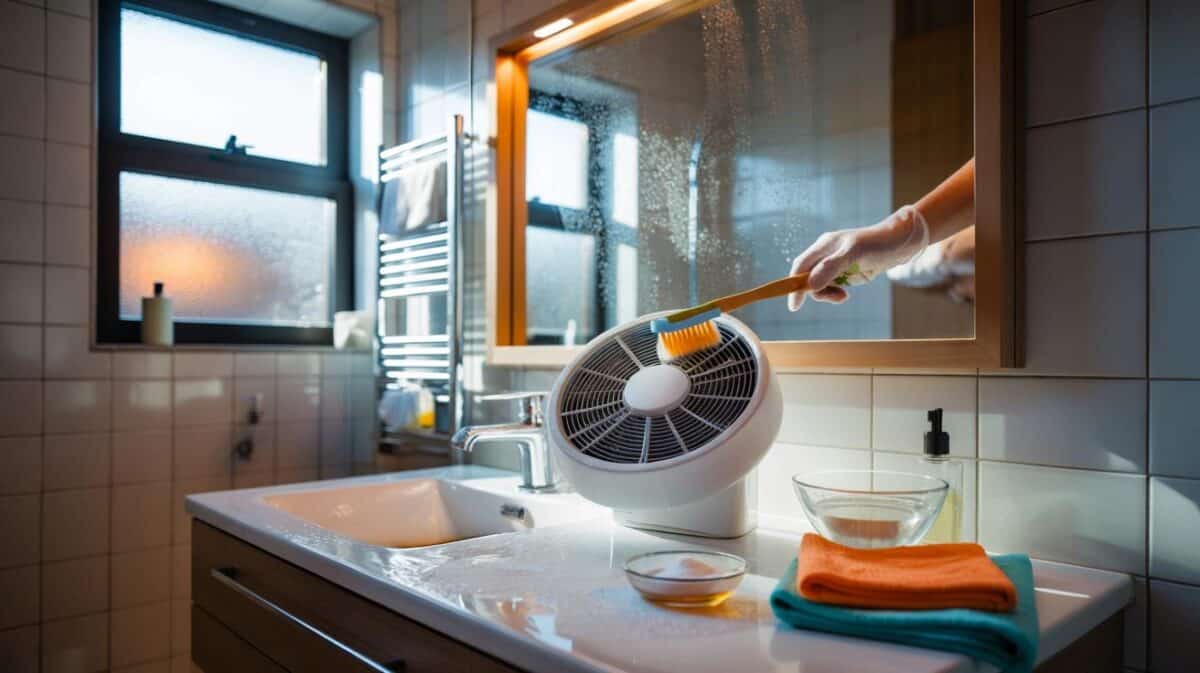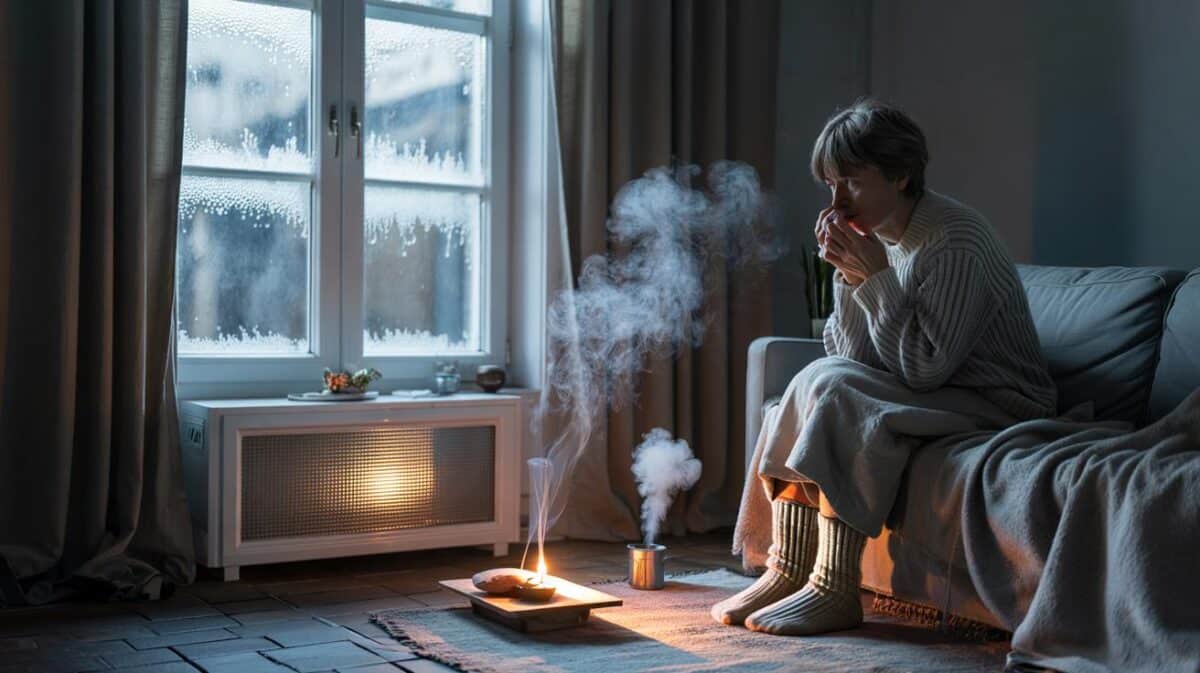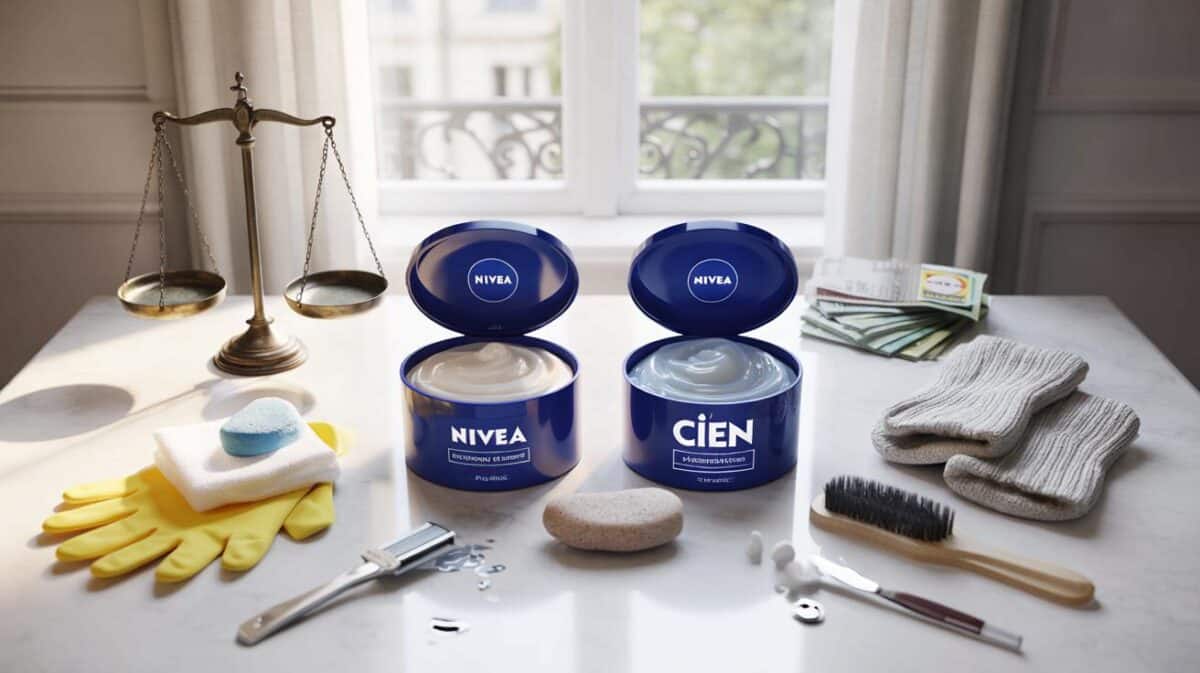A mop bucket turns murky, the floor dries in streaks, and the room still smells faintly of last night’s dinner. You’ve spent a fiver on a “lemon burst” cleaner that promises gleam but leaves residue and false optimism. Then you hear a whisper of a trick: baking soda. One spoon. That’s it.
The owner filled a bucket with warm water, reached for a battered tub of bicarbonate of soda, and paused like someone about to try a magic trick in front of friends. We’ve all had that moment when you bet on something small to make a big difference.
She stirred, mopped with slow figure-eights, and stood back. A soft sheen replaced the dull, tacky film that had become normal, and the room felt lighter, almost colder underfoot. You could hear the tiny change in the squeak of clean.
The odd thing? It wasn’t a new product or a complicated routine. It was a spoonful of powder you probably already have. One spoon. Nothing fancy.
Why a spoon of bicarbonate makes floors look new
The humble spoonful raises the water’s pH just enough to loosen everyday grease, sauces, and oily footprints that cling despite soap. Bicarbonate of soda is a gentle alkali with a whisper of grit, so it nudges dirt off surfaces without scratching a sealed finish. It also softens hard water a touch, which helps your mop glide rather than drag gunk into streaks.
Think of a kitchen after a busy weekend: a toddler’s juice, olive oil mist from a sizzling pan, the dog’s polite but muddy sign-in. A friend in Leeds tried the spoon trick on her matt porcelain tiles, doing half the floor and leaving the other half as a control. The difference wasn’t the kind that shouts; it was the kind that feels different when you walk across it in socks. Your nose notices before your eyes do.
Behind the simple result is tidy chemistry. Baking soda sits around pH 8, mild enough for most sealed floors yet strong enough to break the bond between oils and your tiles. Its tiny crystals add the slightest mechanical lift, while its deodorising knack neutralises lingering kitchen odours rather than perfuming over them. It also helps water behave better, so detergents you already use rinse cleaner. On waxed wood, polished stone, or unsealed timber, press pause and test elsewhere.
How to do it: the one-spoon mop routine
Fill a standard bucket with warm water, then add just one heaped teaspoon of bicarbonate of soda per litre, or a level tablespoon for a typical 4–5 litre bucket. Swirl until dissolved. Dip a clean microfibre mop, wring well, and work in lazy S-shapes from the far corner back to the door. Refresh the solution when it turns grey, and finish with a quick dry pass using a second, dry mop or an old towel underfoot for that crisp, just-done feel.
Use less than you think. Piling in powder can leave a faint film and actually mute the shine you’re after. Skip the urge to “boost” with vinegar; it cancels the alkali and you end up with fancy salty water. Avoid soaking wooden floors—lightly damp is the sweet spot—and keep a separate rinse bucket if you’re dealing with heavy mess. Let’s be honest: nobody really does this every day. But once a week? That’s doable, and it shows.
Go slowly on the first pass, then speed up. A single spoonful changes the whole feel of the floor.
“What people call ‘shine’ is often just the absence of residue,” says a professional cleaner from Bristol. “Bicarb helps the water let go of gunk, so you’re left with the surface you paid for.”
- Cloudy finish? Use less powder and rinse once with plain warm water.
- Sticky patches? Wring more often and swap to a fresh solution halfway.
- Smell hanging around? Mop skirting boards as well—odours cling there.
- Worried about finish? Patch-test behind a door and check once dry.
- Natural stone or waxed wood? Skip bicarb and use a pH-neutral cleaner.
Beyond the shine: what changes when cleaning gets simpler
There’s something oddly freeing about not needing a cupboard of potions to make a floor behave. One spoon of a plain white powder nudges the balance towards clean without perfume, fuss, or plastic-heavy refills. Your mop glides, the bucket water tells the honest story of what’s been lifted, and the room smells like itself again. The trick scales up to life: small, repeatable nudges beat grand plans. Share it with a neighbour, try it on a gloomy Monday, and notice how the space feels when you walk in at night. Maybe you’ll keep the fancy stuff for guests and trust the quiet fix for every day. Or maybe the quiet fix is the point.
| Key points | Detail | Reader Interest |
|---|---|---|
| Use one spoon of bicarb per bucket | Mild alkali loosens grease and softens water; dissolve before mopping | Simple, cheap, immediate results |
| Mind the surface | Great on sealed tiles, LVT, vinyl; avoid waxed wood and polished stone | Protects finishes and saves repair costs |
| Skip “boosters” and heavy doses | Too much leaves residue; don’t mix with vinegar or bleach | Cleaner shine with fewer products |
FAQ :
- Can I use baking soda on hardwood floors?If the floor is sealed polyurethane and you mop lightly damp, a small amount is usually fine. For waxed or oil-finished wood, avoid bicarb and stick to a dedicated pH‑neutral wood cleaner.
- Will it damage grout or make it crumbly?No, bicarbonate is gentle and can even freshen grout by lifting surface film. For stained grout, apply a paste (bicarb plus water), let sit 5–10 minutes, then wipe—skip stiff brushes on soft or old grout.
- Can I mix baking soda with vinegar or bleach?








